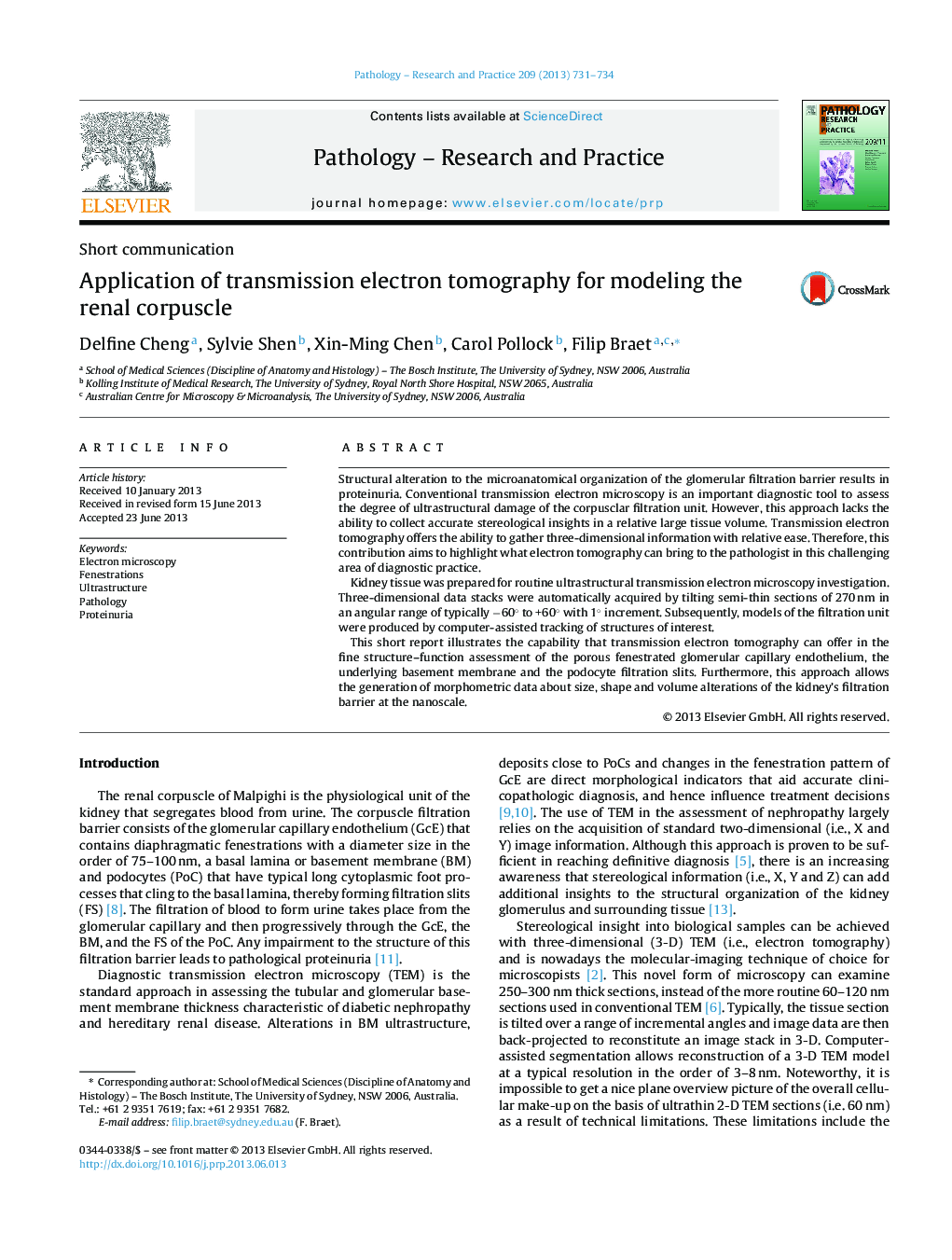| Article ID | Journal | Published Year | Pages | File Type |
|---|---|---|---|---|
| 2155517 | Pathology - Research and Practice | 2013 | 4 Pages |
Structural alteration to the microanatomical organization of the glomerular filtration barrier results in proteinuria. Conventional transmission electron microscopy is an important diagnostic tool to assess the degree of ultrastructural damage of the corpusclar filtration unit. However, this approach lacks the ability to collect accurate stereological insights in a relative large tissue volume. Transmission electron tomography offers the ability to gather three-dimensional information with relative ease. Therefore, this contribution aims to highlight what electron tomography can bring to the pathologist in this challenging area of diagnostic practice.Kidney tissue was prepared for routine ultrastructural transmission electron microscopy investigation. Three-dimensional data stacks were automatically acquired by tilting semi-thin sections of 270 nm in an angular range of typically −60° to +60° with 1° increment. Subsequently, models of the filtration unit were produced by computer-assisted tracking of structures of interest.This short report illustrates the capability that transmission electron tomography can offer in the fine structure–function assessment of the porous fenestrated glomerular capillary endothelium, the underlying basement membrane and the podocyte filtration slits. Furthermore, this approach allows the generation of morphometric data about size, shape and volume alterations of the kidney's filtration barrier at the nanoscale.
